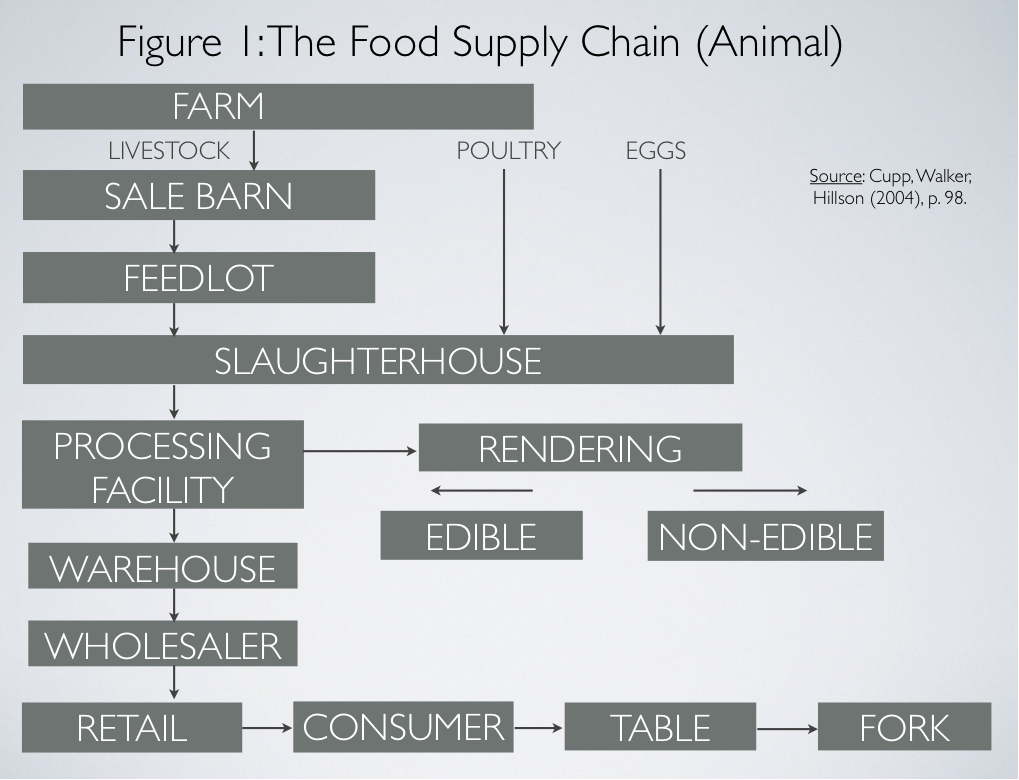Introduction: Agro-Terrorism and Food Safety
Food and agriculture are key elements of the critical infrastructure of every country because they provide products that are essential for life. The United States is a country with a highly developed agricultural sector. Food and agriculture constitute a sixth of the U.S. gross domestic product, totaling more than a trillion dollars per year, and exports of agricultural products make the largest positive contribution to the nation’s trade balance. Only about 3 percent of the U.S. population works directly in agriculture, one of every eight Americans is employed in the processing and manufacturing of foodstuffs. Residents of the United States spend less than 11 percent of their disposable income on food, compared to a global average of 20 to 30 percent.1
In this era of globalization, the U.S. food supply chain from “farm to fork” is extremely complex (Figure 1). It starts with the nation’s 2 million farms and passes through a total of 167,000 processing and manufacturing plants, warehouses, and distribution centers.2 About 15 percent of the U.S. food supply (by dollar value) is foreign-sourced, including about 60 percent of fresh produce and more than 75 percent of seafood.3 Because many imported food items are commodity ingredients, they represent a larger share of consumption than their dollar value would suggest.4 Potential threats to the U.S. food supply include natural outbreaks of crop and livestock diseases, the intentional adulteration of food to gain illicit profits, and deliberate terrorist attacks against livestock, crops, and food products.


